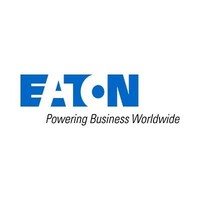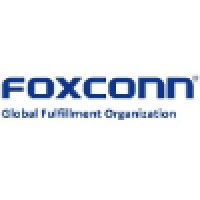
Mitsubishi Electric Company Cyber Security Posture
mitsubishielectric.comThe Mitsubishi Electric Group’s corporate mission is to continually improve its technologies and services by applying creativity to all aspects of its business. By doing so, we enhance the quality of life in our society. Mitsubishi Electric has established itself as a leader in the manufacture and sales of electric and electronic equipment used in Energy and Electric Systems, Industrial Automation, Information and Communication Systems, Electronic Devices, and Home Appliances. [Mitsubishi Electric Social Media Terms of Use] Comments unrelated to the purpose and content of this page are subject to deletion. Please see our social media terms of use for the full list of disclaimers and prohibited activities: http://www.mitsubishielectric.com/social/terms/index.html
Mitsubishi Electric Company Details
mitsubishielectric
6067 employees
268959.0
335
Appliances, Electrical, and Electronics Manufacturing
mitsubishielectric.com
Scan still pending
MIT_3330861
In-progress
Between 900 and 1000
This score is AI-generated and less favored by cyber insurers, who prefer the TPRM score.
 Mitsubishi Electric Global Score
Mitsubishi Electric Global Score.png)

Mitsubishi Electric Company Scoring based on AI Models
| Model Name | Date | Description | Current Score Difference | Score |
|---|---|---|---|---|
| AVERAGE-Industry | 03-12-2025 | This score represents the average cybersecurity rating of companies already scanned within the same industry. It provides a benchmark to compare an individual company's security posture against its industry peers. | N/A | Between 900 and 1000 |
Mitsubishi Electric Company Cyber Security News & History
| Entity | Type | Severity | Impact | Seen | Url ID | Details | View |
|---|---|---|---|---|---|---|---|
| Mitsubishi Electric | Breach | 60 | 3 | 06/2019 | MIT2023111222 | Link | |
Rankiteo Explanation : Attack with significant impact with internal employee data leaksDescription: Mitsubishi Electric, one of the world's largest electronics and electrical equipment manufacturing firms, was hit by a major security breach. Chinese-linked cyber-espionage group named Tick (or Bronze Butler) is the primary suspect. The intrusion was detected after Mitsubishi Electric staff found a suspicious file on one of the company's servers. The intrusion was later tracked to a compromised employee account. Hackers escalated their access from this initial entry point to Mitsubishi Electric's internal systems, gaining access to the networks of around 14 company departments, such as sales and the head administrative office. Hackers stole sensitive data from the company's internal network. Hackers compromised tens of PCs and servers in Japan and overseas from where they stole around 200 MB of files, mostly business documents. | |||||||
| Mitsubishi Electric | Data Leak | 60 | 3 | 11/2020 | MIT11629523 | Link | |
Rankiteo Explanation : Attack with significant impact with internal employee data leaksDescription: Mitsubishi Electric Corp. has again been hit by a massive cyberattack that has resulted in the leaking of information related to its business partners. An improved cybersecurity system was supposed to have been installed after Mitsubishi Electric, a manufacturer of defense equipment, infrastructure and electrical equipment, was targeted. Mitsubishi Electric strengthened access restrictions to its computer network and created a new department reporting directly to the company president to implement new cybersecurity measures. Because the latest attack again targeted a company playing a major role in supporting Japan’s national security and infrastructure, the cyberattack was likely engineered by a group with advanced hacking skills. | |||||||
Mitsubishi Electric Company Subsidiaries

The Mitsubishi Electric Group’s corporate mission is to continually improve its technologies and services by applying creativity to all aspects of its business. By doing so, we enhance the quality of life in our society. Mitsubishi Electric has established itself as a leader in the manufacture and sales of electric and electronic equipment used in Energy and Electric Systems, Industrial Automation, Information and Communication Systems, Electronic Devices, and Home Appliances. [Mitsubishi Electric Social Media Terms of Use] Comments unrelated to the purpose and content of this page are subject to deletion. Please see our social media terms of use for the full list of disclaimers and prohibited activities: http://www.mitsubishielectric.com/social/terms/index.html
Access Data Using Our API

Get company history
.png)
Mitsubishi Electric Cyber Security News
Mitsubishi Electric and Dispel Set New Standard in OT Cybersecurity With Control Engineering 2025 Product of the Year Award
Mitsubishi Electric and Dispel partnership delivers best-in-class OT secure remote access-enhancing uptime, safety, and performance across ...
Details Disclosed for SCADA Flaws That Could Facilitate Industrial Attacks
Palo Alto Networks has shared details on several high-severity Mitsubishi Electric and Iconics SCADA vulnerabilities.
CISA ICS Advisories Highlight CyberData, Hitachi, Mitsubishi
The alerts shed light on remotely exploitable flaws discovered in devices and software produced by CyberData, Hitachi Energy, and Mitsubishi ...
Nozomi Networks debuts initial security sensor embedded in industrial control systems
Widely used across various industries, PLCs enhance operational efficiency by providing real-time processing and control in harsh environments.
Critical Auth Bugs Expose Smart Factory Gear to Cyberattack
An authentication bypass vulnerability in the Mitsubishi Electric MELSEC iQ-R Series/iQ-F Series (CVE-2023-2060, CVSS 8.7) exists in its FTP function on ...
Accelerating smart manufacturing with the new MELSEC MX Controller from Mitsubishi Electric
Mitsubishi Electric has introduced the MELSEC MX Controller, an all-in-one solution engineered for high-speed, high-precision applications.
First security sensor embedded in PLCs will transform cybersecurity
The OT and IoT security specialist, Nozomi Networks, has announced the first OT and IoT security sensor designed to run embedded in PLCs.
CISA Releases 9 ICS Advisories Covering Vulnerabilities & Exploits
The Cybersecurity and Infrastructure Security Agency (CISA) has released nine Industrial Control Systems (ICS) advisories on April 15, 2025, ...
Japan tech companies scramble to comply with EU cybersecurity laws
TOKYO -- Japanese tech companies like NEC and Mitsubishi Electric are struggling to keep up with cybersecurity regulations being enacted in the ...

Mitsubishi Electric Similar Companies

Eaton
Eaton is an intelligent power management company dedicated to improving the quality of life and protecting the environment for people everywhere. We are guided by our commitment to do business right, to operate sustainably and to help our customers manage power ─ today and well into the future. By c

Ninestar
Ninestar (stock code:002180) was founded in 2000, headquater in Zhuhai. Ninestar has been focusing on inkjet cartridges, toner cartridges and ribbons’ development, manufacture and sales for more than sixteen years. Ninestar Corporation devotes to offering all ranges of printing solutions for cus

FOXCONN EMEA
Foxconn EMEA is a regional network of factories and warehouses, responsible for providing in region manufacturing & supply chain solutions to Computer, Communication and Consumer-electronics ("3C") leaders. As part of the Hon Hai technology Group, the world leading partner for joint-design, joint-d

Bihar State Power Holding Company Limited
Bihar State Power Holding Company Limited (or BSPHCL), also known as erstwhile Bihar State Electricity Board (or BSEB) is a state-owned electricity regulation board operating within the state of Bihar in India. Bihar State Electricity Board (BSEB) was established in 1958 as a statutory corporation u

Nikon
ニコンは、100年の歴史で培ってきた「光利用技術」と「精密技術」をもとに、多彩な技術・製品・サービスをグローバルに展開しています。 映像の可能性の追求から、スマートデバイスやバイオサイエンスの進化、高度なものづくり、さらに数十億光年彼方の宇宙を捉える挑戦まで。世界中の人々の暮らしを、未来を開く最先端産業を、そして人類の挑戦を、ニコンはこれからも支え続けます。 At Nikon, we use opto-electronics and precision technologies cultivated during our 100-year history to provide a wide

Keysight Technologies
Keysight empowers innovators to explore, design, and bring world-changing technologies to life. As the industry’s premier global innovation partner, Keysight’s software-centric solutions serve engineers across the design and development environment, enabling them to deliver tomorrow’s breakthroughs

Frequently Asked Questions (FAQ) on Cybersecurity Incidents
Mitsubishi Electric CyberSecurity History Information
Total Incidents: According to Rankiteo, Mitsubishi Electric has faced 2 incidents in the past.
Incident Types: The types of cybersecurity incidents that have occurred include ['Breach', 'Data Leak'].
Total Financial Loss: The total financial loss from these incidents is estimated to be {total_financial_loss}.
Cybersecurity Posture: The company's overall cybersecurity posture is described as The Mitsubishi Electric Group’s corporate mission is to continually improve its technologies and services by applying creativity to all aspects of its business. By doing so, we enhance the quality of life in our society. Mitsubishi Electric has established itself as a leader in the manufacture and sales of electric and electronic equipment used in Energy and Electric Systems, Industrial Automation, Information and Communication Systems, Electronic Devices, and Home Appliances. [Mitsubishi Electric Social Media Terms of Use] Comments unrelated to the purpose and content of this page are subject to deletion. Please see our social media terms of use for the full list of disclaimers and prohibited activities: http://www.mitsubishielectric.com/social/terms/index.html.
Detection and Response: The company detects and responds to cybersecurity incidents through {description_of_detection_and_response_process}.
Incident Details
Incident 1: Ransomware Attack
Title: {Incident_Title}
Description: {Brief_description_of_the_incident}
Date Detected: {Detection_Date}
Date Publicly Disclosed: {Disclosure_Date}
Date Resolved: {Resolution_Date}
Type: {Type_of_Attack}
Attack Vector: {Attack_Vector}
Vulnerability Exploited: {Vulnerability}
Threat Actor: {Threat_Actor}
Motivation: {Motivation}
Incident 2: Data Breach
Title: {Incident_Title}
Description: {Brief_description_of_the_incident}
Date Detected: {Detection_Date}
Date Publicly Disclosed: {Disclosure_Date}
Date Resolved: {Resolution_Date}
Type: {Type_of_Attack}
Attack Vector: {Attack_Vector}
Vulnerability Exploited: {Vulnerability}
Threat Actor: {Threat_Actor}
Motivation: {Motivation}
Common Attack Types: As of now, the company has not encountered any reported incidents involving common cyberattacks.
Identification of Attack Vectors: The company identifies the attack vectors used in incidents through {description_of_identification_process}.
Impact of the Incidents
Incident 1: Ransomware Attack
Financial Loss: {Financial_Loss}
Data Compromised: {Data_Compromised}
Systems Affected: {Systems_Affected}
Downtime: {Downtime}
Operational Impact: {Operational_Impact}
Conversion Rate Impact: {Conversion_Rate_Impact}
Revenue Loss: {Revenue_Loss}
Customer Complaints: {Customer_Complaints}
Brand Reputation Impact: {Brand_Reputation_Impact}
Legal Liabilities: {Legal_Liabilities}
Identity Theft Risk: {Identity_Theft_Risk}
Payment Information Risk: {Payment_Information_Risk}
Incident 2: Data Breach
Financial Loss: {Financial_Loss}
Data Compromised: {Data_Compromised}
Systems Affected: {Systems_Affected}
Downtime: {Downtime}
Operational Impact: {Operational_Impact}
Conversion Rate Impact: {Conversion_Rate_Impact}
Revenue Loss: {Revenue_Loss}
Customer Complaints: {Customer_Complaints}
Brand Reputation Impact: {Brand_Reputation_Impact}
Legal Liabilities: {Legal_Liabilities}
Identity Theft Risk: {Identity_Theft_Risk}
Payment Information Risk: {Payment_Information_Risk}
Average Financial Loss: The average financial loss per incident is {average_financial_loss}.
Commonly Compromised Data Types: The types of data most commonly compromised in incidents are {list_of_commonly_compromised_data_types}.
Incident 1: Ransomware Attack
Entity Name: {Entity_Name}
Entity Type: {Entity_Type}
Industry: {Industry}
Location: {Location}
Size: {Size}
Customers Affected: {Customers_Affected}
Incident 2: Data Breach
Entity Name: {Entity_Name}
Entity Type: {Entity_Type}
Industry: {Industry}
Location: {Location}
Size: {Size}
Customers Affected: {Customers_Affected}
Response to the Incidents
Incident 1: Ransomware Attack
Incident Response Plan Activated: {Yes/No}
Third Party Assistance: {Yes/No}
Law Enforcement Notified: {Yes/No}
Containment Measures: {Containment_Measures}
Remediation Measures: {Remediation_Measures}
Recovery Measures: {Recovery_Measures}
Communication Strategy: {Communication_Strategy}
Adaptive Behavioral WAF: {Adaptive_Behavioral_WAF}
On-Demand Scrubbing Services: {On_Demand_Scrubbing_Services}
Network Segmentation: {Network_Segmentation}
Enhanced Monitoring: {Enhanced_Monitoring}
Incident 2: Data Breach
Incident Response Plan Activated: {Yes/No}
Third Party Assistance: {Yes/No}
Law Enforcement Notified: {Yes/No}
Containment Measures: {Containment_Measures}
Remediation Measures: {Remediation_Measures}
Recovery Measures: {Recovery_Measures}
Communication Strategy: {Communication_Strategy}
Adaptive Behavioral WAF: {Adaptive_Behavioral_WAF}
On-Demand Scrubbing Services: {On_Demand_Scrubbing_Services}
Network Segmentation: {Network_Segmentation}
Enhanced Monitoring: {Enhanced_Monitoring}
Incident Response Plan: The company's incident response plan is described as {description_of_incident_response_plan}.
Third-Party Assistance: The company involves third-party assistance in incident response through {description_of_third_party_involvement}.
Data Breach Information
Incident 2: Data Breach
Type of Data Compromised: {Type_of_Data}
Number of Records Exposed: {Number_of_Records}
Sensitivity of Data: {Sensitivity_of_Data}
Data Exfiltration: {Yes/No}
Data Encryption: {Yes/No}
File Types Exposed: {File_Types}
Personally Identifiable Information: {Yes/No}
Prevention of Data Exfiltration: The company takes the following measures to prevent data exfiltration: {description_of_prevention_measures}.
Handling of PII Incidents: The company handles incidents involving personally identifiable information (PII) through {description_of_handling_process}.
Ransomware Information
Incident 1: Ransomware Attack
Ransom Demanded: {Ransom_Amount}
Ransom Paid: {Ransom_Paid}
Ransomware Strain: {Ransomware_Strain}
Data Encryption: {Yes/No}
Data Exfiltration: {Yes/No}
Ransom Payment Policy: The company's policy on paying ransoms in ransomware incidents is described as {description_of_ransom_payment_policy}.
Data Recovery from Ransomware: The company recovers data encrypted by ransomware through {description_of_data_recovery_process}.
Regulatory Compliance
Incident 1: Ransomware Attack
Regulations Violated: {Regulations_Violated}
Fines Imposed: {Fines_Imposed}
Legal Actions: {Legal_Actions}
Regulatory Notifications: {Regulatory_Notifications}
Incident 2: Data Breach
Regulations Violated: {Regulations_Violated}
Fines Imposed: {Fines_Imposed}
Legal Actions: {Legal_Actions}
Regulatory Notifications: {Regulatory_Notifications}
Regulatory Frameworks: The company complies with the following regulatory frameworks regarding cybersecurity: {list_of_regulatory_frameworks}.
Ensuring Regulatory Compliance: The company ensures compliance with regulatory requirements through {description_of_compliance_measures}.
Lessons Learned and Recommendations
Incident 1: Ransomware Attack
Lessons Learned: {Lessons_Learned}
Incident 2: Data Breach
Lessons Learned: {Lessons_Learned}
Incident 1: Ransomware Attack
Recommendations: {Recommendations}
Incident 2: Data Breach
Recommendations: {Recommendations}
Key Lessons Learned: The key lessons learned from past incidents are {list_of_key_lessons_learned}.
Implemented Recommendations: The company has implemented the following recommendations to improve cybersecurity: {list_of_implemented_recommendations}.
References
Additional Resources: Stakeholders can find additional resources on cybersecurity best practices at {list_of_additional_resources}.
Investigation Status
Incident 1: Ransomware Attack
Investigation Status: {Investigation_Status}
Incident 2: Data Breach
Investigation Status: {Investigation_Status}
Communication of Investigation Status: The company communicates the status of incident investigations to stakeholders through {description_of_communication_process}.
Stakeholder and Customer Advisories
Incident 1: Ransomware Attack
Stakeholder Advisories: {Stakeholder_Advisories}
Customer Advisories: {Customer_Advisories}
Incident 2: Data Breach
Stakeholder Advisories: {Stakeholder_Advisories}
Customer Advisories: {Customer_Advisories}
Advisories Provided: The company provides the following advisories to stakeholders and customers following an incident: {description_of_advisories_provided}.
Initial Access Broker
Incident 1: Ransomware Attack
Entry Point: {Entry_Point}
Reconnaissance Period: {Reconnaissance_Period}
Backdoors Established: {Backdoors_Established}
High Value Targets: {High_Value_Targets}
Data Sold on Dark Web: {Yes/No}
Incident 2: Data Breach
Entry Point: {Entry_Point}
Reconnaissance Period: {Reconnaissance_Period}
Backdoors Established: {Backdoors_Established}
High Value Targets: {High_Value_Targets}
Data Sold on Dark Web: {Yes/No}
Monitoring and Mitigation of Initial Access Brokers: The company monitors and mitigates the activities of initial access brokers through {description_of_monitoring_and_mitigation_measures}.
Post-Incident Analysis
Incident 1: Ransomware Attack
Root Causes: {Root_Causes}
Corrective Actions: {Corrective_Actions}
Incident 2: Data Breach
Root Causes: {Root_Causes}
Corrective Actions: {Corrective_Actions}
Post-Incident Analysis Process: The company's process for conducting post-incident analysis is described as {description_of_post_incident_analysis_process}.
Corrective Actions Taken: The company has taken the following corrective actions based on post-incident analysis: {list_of_corrective_actions_taken}.
Additional Questions
General Information
Ransom Payment History: The company has {paid/not_paid} ransoms in the past.
Last Ransom Demanded: The amount of the last ransom demanded was {last_ransom_amount}.
Last Attacking Group: The attacking group in the last incident was {last_attacking_group}.
Incident Details
Most Recent Incident Detected: The most recent incident detected was on {most_recent_incident_detected_date}.
Most Recent Incident Publicly Disclosed: The most recent incident publicly disclosed was on {most_recent_incident_publicly_disclosed_date}.
Most Recent Incident Resolved: The most recent incident resolved was on {most_recent_incident_resolved_date}.
Impact of the Incidents
Highest Financial Loss: The highest financial loss from an incident was {highest_financial_loss}.
Most Significant Data Compromised: The most significant data compromised in an incident was {most_significant_data_compromised}.
Most Significant System Affected: The most significant system affected in an incident was {most_significant_system_affected}.
Response to the Incidents
Third-Party Assistance in Most Recent Incident: The third-party assistance involved in the most recent incident was {third_party_assistance_in_most_recent_incident}.
Containment Measures in Most Recent Incident: The containment measures taken in the most recent incident were {containment_measures_in_most_recent_incident}.
Data Breach Information
Most Sensitive Data Compromised: The most sensitive data compromised in a breach was {most_sensitive_data_compromised}.
Number of Records Exposed: The number of records exposed in the most significant breach was {number_of_records_exposed}.
Ransomware Information
Highest Ransom Demanded: The highest ransom demanded in a ransomware incident was {highest_ransom_demanded}.
Highest Ransom Paid: The highest ransom paid in a ransomware incident was {highest_ransom_paid}.
Regulatory Compliance
Highest Fine Imposed: The highest fine imposed for a regulatory violation was {highest_fine_imposed}.
Most Significant Legal Action: The most significant legal action taken for a regulatory violation was {most_significant_legal_action}.
Lessons Learned and Recommendations
Most Significant Lesson Learned: The most significant lesson learned from past incidents was {most_significant_lesson_learned}.
Most Significant Recommendation Implemented: The most significant recommendation implemented to improve cybersecurity was {most_significant_recommendation_implemented}.
References
Most Recent Source: The most recent source of information about an incident is {most_recent_source}.
Most Recent URL for Additional Resources: The most recent URL for additional resources on cybersecurity best practices is {most_recent_url}.
Investigation Status
Current Status of Most Recent Investigation: The current status of the most recent investigation is {current_status_of_most_recent_investigation}.
Stakeholder and Customer Advisories
Most Recent Stakeholder Advisory: The most recent stakeholder advisory issued was {most_recent_stakeholder_advisory}.
Most Recent Customer Advisory: The most recent customer advisory issued was {most_recent_customer_advisory}.
Initial Access Broker
Most Recent Entry Point: The most recent entry point used by an initial access broker was {most_recent_entry_point}.
Most Recent Reconnaissance Period: The most recent reconnaissance period for an incident was {most_recent_reconnaissance_period}.
Post-Incident Analysis
Most Significant Root Cause: The most significant root cause identified in post-incident analysis was {most_significant_root_cause}.
Most Significant Corrective Action: The most significant corrective action taken based on post-incident analysis was {most_significant_corrective_action}.
What Do We Measure?
















Every week, Rankiteo analyzes billions of signals to give organizations a sharper, faster view of emerging risks. With deeper, more actionable intelligence at their fingertips, security teams can outpace threat actors, respond instantly to Zero-Day attacks, and dramatically shrink their risk exposure window.
These are some of the factors we use to calculate the overall score:
Identify exposed access points, detect misconfigured SSL certificates, and uncover vulnerabilities across the network infrastructure.
Gain visibility into the software components used within an organization to detect vulnerabilities, manage risk, and ensure supply chain security.
Monitor and manage all IT assets and their configurations to ensure accurate, real-time visibility across the company's technology environment.
Leverage real-time insights on active threats, malware campaigns, and emerging vulnerabilities to proactively defend against evolving cyberattacks.




